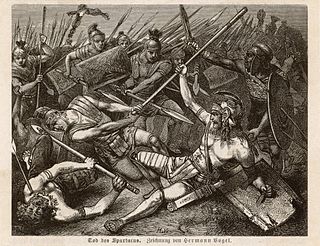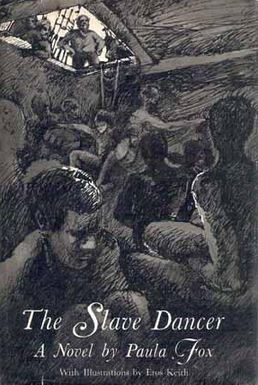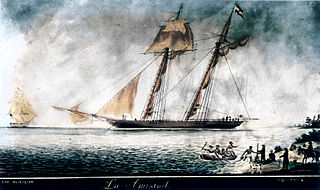
A slave rebellion is an armed uprising by slaves, as a way of fighting for their freedom. Rebellions of slaves have occurred in nearly all societies that practice slavery or have practiced slavery in the past. A desire for freedom and the dream of successful rebellion is often the greatest object of song, art, and culture amongst the enslaved population. These events, however, are often violently opposed and suppressed by slaveholders.

Sag Harbor is an incorporated village in Suffolk County, New York, United States, in the towns of Southampton and East Hampton on eastern Long Island. The village developed as a working port on Gardiners Bay. The population was 2,772 at the 2020 census.

Southampton is an incorporated village in the Town of Southampton in Suffolk County, on the South Fork of Long Island, in New York, United States. The population was 4,550 at the 2020 census, an increase of 46.3% from the 2010 census a decade earlier.

Southampton, officially the Town of Southampton, is a town in southeastern Suffolk County, New York, partly on the South Fork of Long Island. As of the 2020 U.S. census, the town had a population of 69,036. Southampton is included in the stretch of shoreline prominently known as the Hamptons.

The Middle Passage was the stage of the Atlantic slave trade in which millions of enslaved Africans were transported to the Americas as part of the triangular slave trade. Ships departed Europe for African markets with manufactured goods, which were then traded for slaves with rulers of African states and other African slave traders. Slave ships transported the slaves across the Atlantic. The proceeds from selling slaves were then used to buy products such as furs and hides, tobacco, sugar, rum, and raw materials, which would be transported back to Europe to complete the triangle.

The Town of East Hampton is located in southeastern Suffolk County, New York, at the eastern end of the South Shore of Long Island. It is the easternmost town in the state of New York. At the time of the 2020 United States census, it had a total population of 28,385.

The Creole mutiny, sometimes called the Creole case, was a slave revolt aboard the American slave ship Creole in November 1841, when the brig was seized by the 128 slaves who were aboard the ship when it reached Nassau in the British colony of the Bahamas where slavery was abolished. The brig was transporting enslaved people as part of the coastwise slave trade in the American South. It has been described as the "most successful slave revolt in US history". Two died in the revolt, an enslaved person and a member of the crew.

The Bombardment of Algiers was an attempt on 27 August 1816 by Britain and the Netherlands to end the slavery practices of Omar Agha, the Dey of Algiers. An Anglo-Dutch fleet under the command of Admiral Edward Pellew, 1st Viscount Exmouth bombarded ships and the harbour defences of Algiers.

The Slave Dancer is a historical novel written by Paula Fox and published in 1973. It tells the story of a boy called Jessie Bollier who witnessed first-hand the savagery of the Atlantic slave trade. The book not only includes a historical account, but it also touches upon the emotional conflicts felt by those involved in transporting the slaves from Africa to other parts of the world. It tells the story of a thirteen-year-old boy, Jessie Bollier, who is put in a position which allows him to see the African slave trade in person. Jessie is captured from his New Orleans home and brought to an American ship. There he is forced to play the fife in order to keep the other slaves dancing, and thus strong when they arrive at their destination. The book received the Newbery Medal in 1974.

La Amistad was a 19th-century two-masted schooner owned by a Spaniard living in Cuba. It became renowned in July 1839 for a slave revolt by Mende captives who had been captured and sold to European slave traders and illegally transported by a Portuguese ship from West Africa to Cuba, in violation of European treaties against the Atlantic slave trade. Spanish plantation owners Don José Ruiz and Don Pedro Montes bought 53 captives in Havana, Cuba, including four children, and were transporting them on the ship to their plantations near Puerto Príncipe. The revolt began after the schooner's cook jokingly told the slaves that they were to be "killed, salted, and cooked." Sengbe Pieh unshackled himself and the others on the third day and started the revolt. They took control of the ship, killing the captain and the cook. Two Africans were also killed in the melee.
Seedies and Kroomen were African sailors recruited locally into the British Royal Navy in the 19th and early 20th century.

Mercator Cooper was a ship's captain who is credited with the first formal American visit near Edo, Japan and the first formal landing on the mainland East Antarctica.
The Manhattan was a United States whaling ship under Captain Mercator Cooper that made the first authorized visit of an American ship to Tokyo Bay, in 1845.
Jonas Poole was an early 17th-century English explorer and sealer, and was significant in the history of whaling.

Commercial whaling in the United States dates to the 17th century in New England. The industry peaked in 1846–1852, and New Bedford, Massachusetts, sent out its last whaler, the John R. Mantra, in 1927. The Whaling industry was engaged with the production of three different raw materials: whale oil, spermaceti oil, and whalebone. Whale oil was the result of "trying-out" whale blubber by heating in water. It was a primary lubricant for machinery, whose expansion through the Industrial Revolution depended upon before the development of petroleum-based lubricants in the second half of the 19th century. Once the prized blubber and spermaceti had been extracted from the whale, the remaining majority of the carcass was discarded.

Sperm whaling is the human practice of hunting sperm whales, the largest toothed whale and the deepest-diving marine mammal species, for the oil, meat and bone that can be extracted from the cetaceans' bodies.
Port au Prince was built in France in 1790. The British Royal Navy captured her in 1793 off Port-au-Prince, Haiti. Her original name was General Dumourier; her new owners named her for her place of capture. She became a letter of marque, slave ship in the triangular trade in enslaved people, and privateer cum whaler. In 1806 she anchored at a Tongan island where the local inhabitants massacred most of her crew and then scuttled her.
Thomas King was a British slave-trader and partner in the firm of Camden, Calvert and King. His early career was at sea in a variety of vessels involved in the slave trade in the Caribbean and West Africa in the 1760s. He probably met his future business partners Anthony Calvert (1735–1809) and William Camden at this time when he was master on ships owned by them. He first partnered with them as Camden, Calvert and King for the voyage of the Three Good Friends to St Vincent in 1773 and the firm subsequently made many slaving and trading voyages in which they transported at least 22,000 enslaved persons, mostly from West Africa to the Caribbean.

Abolitionism in New Bedford, Massachusetts, began with the opposition to slavery voiced by Quakers during the late 1820s, followed by African Americans forming the antislavery group New Bedford Union Society in 1833, and an integrated group of abolitionists forming the New Bedford Anti-Slavery Society a year later. During the era New Bedford, Massachusetts, gained a reputation as a safe haven for fugitive slaves seeking freedom. Located on the East Coast of the United States, the town was becoming the "whaling capital of the world", where ships frequently returned to port, operated by crews of diverse backgrounds, languages, and ethnicity. This made it easy for fugitive slaves to "mix in" with crew members. The whaling and shipping industries were also uniquely open to people of color.
Trelawney or Trelawny was a ship launched at Bristol in 1781. Initially she was a West Indiaman. In 1791 she made one voyage as a slave ship in the triangular trade in enslaved people. She then made one voyage as a whaler in the British southern whale fishery. She was sold to Liverpool and made two more voyages as a slave ship. She was damaged outbound on a fourth voyage to transport enslaved people and then disappears from online records.














